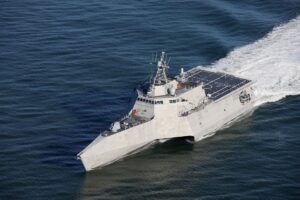
A new Government Accountability Office (GAO) report said the Navy needs to do more to address deficiencies and implement a better sustainment approach for Littoral Combat Ships. “The Littoral Combat Ship (LCS) fleet has not demonstrated the operational capabilities it needs to perform its mission. Operational testing has found several significant challenges,” the Feb. 24 GAO report titled 'Littoral Combat Ship: Actions Needed to Address Significant Operational Challenges and Implement Planned Sustainment Approach,' said. LCS faces challenges in the ability…

 By
By 











